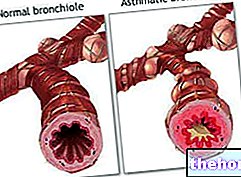
More specifically, the term is used to indicate the occupation of the space of the crypts (ie cavities) present on the surface of the tonsillar glands, by infectious debris, deposits of calcified material or food residues.
Cryptic tonsils are associated with the appearance of whitish and foul-smelling plaques, bad breath (halitosis), ear pain, sore throat, swallowing problems and hypertrophic tonsils.
When sediments of food or other nature occupy the space of the tonsillar crypts and settle permanently, they can give rise to a series of annoyances that must be corrected promptly with the appropriate treatment.
In this regard, a "careful clinical evaluation by the" otolaryngologist allows to identify the exact causes of the disorder and establish the most appropriate therapeutic strategies. If the cryptic tonsils are the cause of serious recurrent infections and resistant to drug treatment, an indication is given to their removal (tonsillectomy).




























